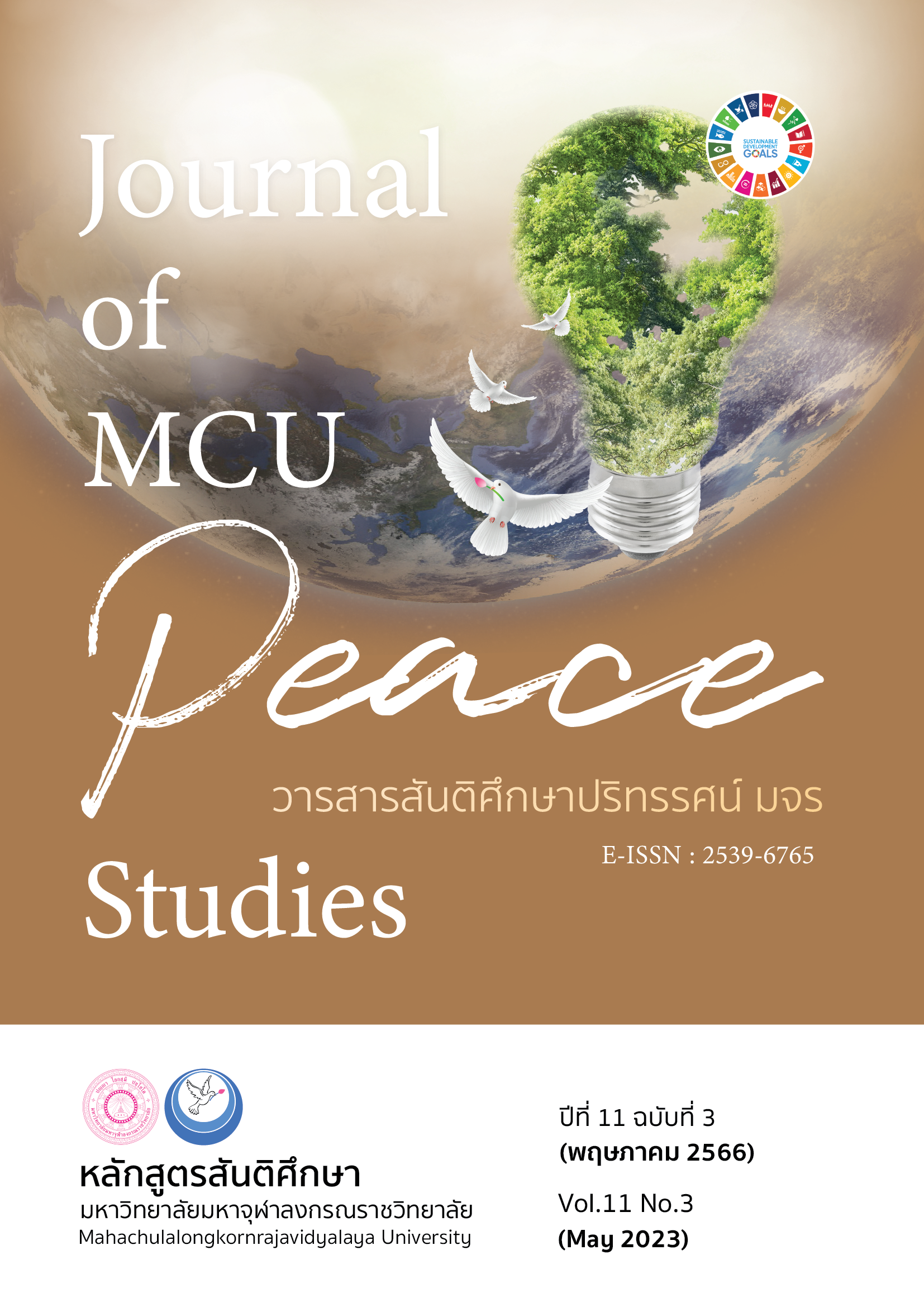รูปแบบความสัมพันธ์เชิงสาเหตุการเปลี่ยนแปลงโรงเรียนทั้งระบบของสถานศึกษา สังกัดสำนักงานคณะกรรมการการศึกษาขั้นพื้นฐาน
Main Article Content
บทคัดย่อ
บทความวิจัยในครั้งนี้มีวัตถุประสงค์ 1) เพื่อศึกษารูปแบบ 2) เพื่อตรวจสอบรูปแบบ 3) เพื่อนำเสนอแนวทางการเปลี่ยนแปลงโรงเรียนทั้งระบบ กลุ่มตัวอย่าง ได้แก่ ผู้บริหารและครูโรงเรียนโครงการการเปลี่ยนแปลงทั้งระบบ จำนวน 560 คน โดยกำหนดกลุ่มตัวอย่าง 20 เท่าของตัวแปร และใช้การสุ่มแบบหลายขั้นตอน เครื่องมือการวิจัย ได้แก่ แบบสัมภาษณ์และแบบสอบถามที่มีต่อรูปแบบ และแบบสัมภาษณ์ แนวทางการเปลี่ยนแปลงโรงเรียนทั้งระบบ วิเคราะห์ข้อมูลโดยการวิเคราะห์เนื้อหาและความสัมพันธ์โครงสร้าง เชิงเส้นด้วยโปรแกรม Mplus
ผลการวิจัย พบว่า 1. รูปแบบความสัมพันธ์เชิงสาเหตุการเปลี่ยนแปลงโรงเรียนทั้งระบบของสถานศึกษา สังกัดสำนักงานคณะกรรมการการศึกษาขั้นพื้นฐาน ประกอบด้วย 7 ตัวแปรแฝง 28 ตัวแปรสังเกตได้ และ 63 ตัวชี้วัด ดังนี้ เครือข่ายการเรียนรู้ทางวิชาชีพ (PLN) การบริหารจัดการสถานศึกษา (Man) การจัดการเรียนรู้และการพัฒนานักเรียน (LD) โรงเรียนพัฒนาตนเอง (WSAS) ครูมืออาชีพ (WSAT) เครือข่ายการเรียนรู้ (WSAN) และนักเรียนคุณภาพ (WSAQ) 2. ผลการตรวจสอบรูปแบบโดยการวิเคราะห์ความสัมพันธ์โครงสร้างเชิงเส้น พบว่า สอดคล้องกับข้อมูลเชิงประจักษ์ โดยมีดัชนีความสอดคล้อง ได้แก่ ค่าไค-สแควร์ (X2) เท่ากับ 169.058 ที่ระดับนัยสำคัญ p=.2416 ที่องศาความเป็นอิสระ (df) 157 ดัชนีวัดความสอดคล้องกลมกลืนเชิงสัมพันธ์ (CFI) เท่ากับ .999 ดัชนีการยอมรับของโมเดล (TLI) เท่ากับ .998 และดัชนีความคลาดเคลื่อนการประมาณค่าพารามิเตอร์ (RMSEA) เท่ากับ 0.014 ดัชนีรากค่าเฉลี่ยกำลังสองของเศษเหลือในรูปคะแนนมาตรฐาน (SRMR) เท่ากับ .018 3. แนวทางการเปลี่ยนแปลงโรงเรียนทั้งระบบ ประกอบด้วย การกำหนดเครือข่ายการเรียนรู้ทางวิชาชีพ เพื่อส่งเสริมการบริหารจัดการสถานศึกษา การจัดการเรียนรู้และการพัฒนานักเรียน ซึ่งจะนำไปสู่โรงเรียนพัฒนาตนเอง ครูมืออาชีพ และเครือข่ายการเรียนรู้ ซึ่งจะส่งผลต่อนักเรียนคุณภาพ
Article Details

อนุญาตภายใต้เงื่อนไข Creative Commons Attribution-NonCommercial-NoDerivatives 4.0 International License.
ทัศนะและความคิดเห็นที่ปรากฏในบทความในวารสาร ถือเป็นความรับผิดชอบของผู้เขียนบทความนั้น และไม่ถือเป็นทัศนะและความรับผิดชอบของกองบรรณาธิการ ยินยอมว่าบทความเป็นลิขสิทธิ์ของวารสาร
เอกสารอ้างอิง
Cheng, Y. C. (1993). Profiles of Organizational Culture and Effective School. School Effectiveness and School Improvement, 4, 85-110.
Hattie et al. (2009). Visible Learning for Teachers: Maximizing Impact on Learning. New York: Routledge.
Leslie, J. (1990). Risking the World's End. Interchange, 21, 49–58.
Montha, K. (2018). Factors Effecting the Quality of School under the Office of Bangkok Primary Education Service Area. (Doctoral Dissertation). Siam University. Bangkok.
Panich, V. (2020). Education Equality Fund Moves forward to Enhancing the Quality of the School: Reduce Inequality. Retrieved November 18, 2020, From https://www.eef.or.th/260920-2/
Panich, V., & Manthachit, P. (2020). World-Class High-Quality Education. Bangkok: Siam Commercial Bank Foundation.
Senge, P.M. (1990). The Fifth Discipline: The Art and Practice of the Learning Organization. New York: Doubleday.
Siritrangsi, P. (2020). Research Report: Monitoring and Evaluating the Teacher and School Quality Program. Bangkok: DPU Coolprint, Dhurakij Pundit University.
Siritrangsi, P. et al. (2019). Guidelines for Being a Quality Coach in the Teacher and School Quality Program. Bangkok: DPU Coolprint, Dhurakij Pundit University.
Thacker, J. L., & William, M. D. (1992). Changing Academic Culture to Improve Student Achievement in the Elementary Schools. ERS Spectrum, 10(4), 18-23.


